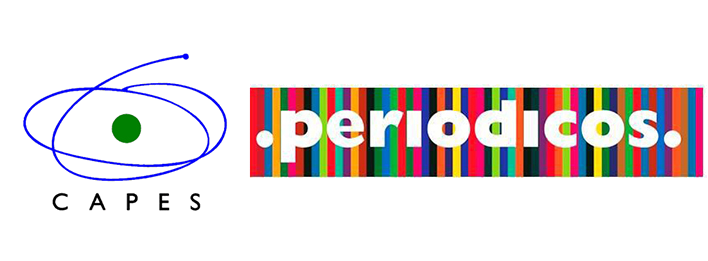THE BRAZILIAN PLAYER OF LEAGUE OF LEGENDS
PROFILE AND PLAYING MOTIVATION
Keywords:
League of Legends, Motivation to PLay, PLS-SEMAbstract
The aim of this paper is to identify the profile of the Brazilian player of League of legends by understanding the motivations that lead them to play. The video games industry is a growing market with the potential to provide interest insights to the field of consumer research. League of Legends is a MOBA game developed by Riot Games in 2009 and had over 100 monthly players in 2016. We used a quantitative approach to achieve the research goal. The Digital Games Motivation Scale (DGMS) was applied in a survey with 240 players. PLS-SEM was utilized to identify how this motivation affect the behavior of the players. We found that pastime, performance, habit and agency were the most important motives for the players and motivation has a greater impact when it comes to the number of hours the player spends on the game daily, the number of matches they play daily, the interest they have in buying game items with real money and the number of matches they play daily. Finally, the limitations of the study and suggestions for future research are presented.
References
Events By the Numbers. (2019, January 02). Retrieved March/April, 2019, from https://nexus.leagueoflegends.com/en-us/2018/12/2018-events-by-the-numbers/
Arafat, M., Qusef, A., & Al-Taher, S. (2019, April). Steam’s Early Access Model: A Study on Consumers’ Perspective. In 2019 IEEE Jordan International Joint Conference on Electrical Engineering and Information Technology (JEEIT) (pp. 336-341). IEEE.
Bányai, F., Griffiths, M. D., Király, O., & Demetrovics, Z. (2019). The psychology of esports: A systematic literature review. Journal of gambling studies, 35(2), 351-365.
Choi, C. (2019). Understanding media consumption of electronic sports through spectator motivation, using three different segmentation approaches: the levels of addiction, passion, and fan identification. Sport Mont, 17(1), 3-8.
Connolly, T. M., Boyle, E. A., MacArthur, E., Hainey, T., & Boyle, J. M. (2012). A systematic literature review of empirical evidence on computer games and serious games. Computers & education, 59(2), 661-686.
Connolly, T. M., Boyle, E. A., MacArthur, E., Hainey, T., & Boyle, J. M. (2012). A systematic literature review of empirical evidence on computer games and serious games. Computers & education, 59(2), 661-686.
Costa, F. D. (2011). Mensuração e desenvolvimento de escalas: aplicações em administração. Rio de Janeiro: Ciência Moderna.
Cotter, K. (2019). Playing the visibility game: How digital influencers and algorithms negotiate influence on Instagram. New Media & Society, 21(4), 895-913.
Cottrell, C., McMillen, N., & Harris, B. S. (2019). Sport psychology in a virtual world: Considerations for practitioners working in eSports. Journal of Sport Psychology in Action, 10(2), 73-81.
De Grove, F., Cauberghe, V., & Van Looy, J. (2016). Development and validation of an instrument for measuring individual motives for playing digital games. Media Psychology, 19(1), 101-125.
Demetrovics, Z., Urbán, R., Nagygyörgy, K., Farkas, J., Zilahy, D., Mervó, B., Harmath, E. (2011). Why do you play? The development of the motives for online gaming questionnaire (MOGQ). Behavior Research Methods, 43(3), 814-825.
F. Hair Jr, J., Sarstedt, M., Hopkins, L., & G. Kuppelwieser, V. (2014). Partial least squares structural equation modeling (PLS-SEM) An emerging tool in business research. European Business Review, 26(2), 106-121.
Feng, J., Spence, I., & Pratt, J. (2007). Playing an action video game reduces gender differences in spatial cognition. Psychological science, 18(10), 850-855.
Geiler, A. (2016). eSports. Zeitschrift für Herz-, Thorax-und Gefäßchirurgie, 30(3), 213-216.
Greenberg, B. S., Sherry, J., Lachlan, K., Lucas, K., & Holmstrom, A. (2010). Orientations to video games among gender and age groups. Simulation & Gaming, 41(2), 238-259.
Griffiths, M. (2017). The psychosocial impact of professional gambling, professional video gaming & eSports. Casino & Gaming International, 28, 59-63
Griffiths, M. D. (2017). The psychosocial impact of professional gambling, professional video gaming & eSports. Casino & Gaming International, 28, 59-63.
Guo, H., Hao, L., Mukhopadhyay, T., Sun, D. (2014, December 17-19) Pricing strategies of in-game virtual currency completed research paper. In 24th Annual Workshop on Information Technologies and Systems: Value Creation from Innovative Technologies.
Gusmão, P., Almeida, T., Lopes, F., Muryn, Y., Martins, J., & Au-Yong-Oliveira, M. (2019, April). Microtransactions in the Company’s and the Player’s Perspective: A Manual and Automatic Analysis. In World Conference on Information Systems and Technologies (pp. 440-451). Springer, Cham.
Hair Jr, J. F., Hult, G. T. M., Ringle, C., & Sarstedt, M. (2016). A primer on partial least squares structural equation modeling (PLS-SEM). Sage publications.
Lee, J.-Y., An, J.-W., & Lee, S.-W. (2014). Factors affecting eSports audience satisfaction-The case of League of Legends. Journal of Korea Game Society, 14(3), 35-46.
Lowry, P. B., & Gaskin, J. (2014). Partial least squares (PLS) structural equation modeling (SEM) for building and testing behavioral causal theory: When to choose it and how to use it. IEEE transactions on professional communication, 57(2), 123-146.
Man, G. (2019). 7 maneiras de voltar ao jogo como Jungler no League of Legends. Escola do LOL: transformando aprendizes em Mestres. Uol. Available in: <https://www.escoladolol.org/2019/01/7-maneiras-de-voltar-ao-jogo-como.html>. Access in: 20 aug. 2019.
Macedo, T., & do Corral Vieira, M. (2018, April). Dinâmicas de consumo de bens virtuais: práticas e valores no universo de League of Legends. In E-Compós (Vol. 21, No. 1).
Molesworth, M., & Knott, J. D. (Eds.). (2013). Digital virtual consumption. Routledge.
Mora-Cantallops, M., & Sicilia, M. A. (2018). MOBA games: A literature review. Entertainment Computing, 26, 128-138.
N. (2018, April 30). Global Games Market Revenues 2018: Per Region & Segment. Retrieved April/May, 2019, from https://newzoo.com/insights/articles/global-games-market-reaches-137-9-billion-in-2018-mobile-games-take-half/
Paravizo, E., & de Souza, R. R. L. (2018, August). Playing for Real: An Exploratory Analysis of Professional Esports Athletes’ Work. In Congress of the International Ergonomics Association (pp. 507-515). Springer, Cham.
Qian, T. Y., Wang, J. J., Zhang, J. J., & Lu, L. Z. (2019). It is in the game: dimensions of esports online spectator motivation and development of a scale. European Sport Management Quarterly, 1-22.
Ratan, R. A., Taylor, N., Hogan, J., Kennedy, T., & Williams, D. (2015). Stand by your man: An examination of gender disparity in League of Legends. Games and Culture, 10(5), 438-462.
Reza, A., Chu, S., Khan, Z., Nedd, A., Castillo, A., & Gardner, D. (2019, March). Skins for Sale: Linking Player Identity, Representation, and Purchasing Practices. In International Conference on Information (pp. 124-131). Springer, Cham.
Ringle, C. M., Da Silva, D., & Bido, D. D. S. (2014). Modelagem de equações estruturais com utilização do SmartPLS. Revista Brasileira de Marketing, 13(2), 56-73.
Setterstrom, A. J., & Pearson, J. M. (2019). Social Influence and Willingness to Pay for Massively Multiplayer Online Games: An Empirical Examination of Social Identity Theory. Communications of the Association for Information Systems, 44(1), 2.
Sherry, J. L., Lucas, K., Greenberg, B. S., & Lachlan, K. (2006). Video game uses and gratifications as predictors of use and game preference. In P. Vorderer, & J. Bryant (Eds.), Playing video games: Motives, responses, and consequences (pp. 213-224). Mahwah, NJ: Lawrence Erlbaum Associates.
Shieber, J. (2019, January 22). Video game revenue tops $43 billion in 2018, an 18% jump from 2017. Retrieved April/May, 2019, from https://techcrunch.com/2019/01/22/video-game-revenue-tops-43-billion-in-2018-an-18-jump-from-2017/
Vorderer, P. (2000). Interactive entertainment and beyond. In D. Zillman, & P. Vorderer (Eds.), Media entertainment: The psychology of its appeal (pp. 21-36). Mahwah, NJ: Lawrence Erlbaum Associates.
Vorderer, P., Hartmann, T., & Klimmt, C. (2003, May). Explaining the enjoyment of playing video games: the role of competition. Paper presented at the Proceedings of the Second International Conference on Entertainment Computing, Pittsburgh, Pennsylvania, USA
Xia, B., Wang, H., & Zhou, R. (2019). What Contributes to Success in MOBA Games? An Empirical Study of Defense of the Ancients 2. Games and Culture, 14(5), 498-522.
Yee, N. (2006a). The demographics, motivations, and derived experiences of users of massively multi-user online graphical environments. Presence: Teleoperators and Virtual Environments, 15(3), 309-329.
Yee, N. (2006b). Motivations for play in online games. CyberPsychology & Behavior, 9(6), 772-775.
Downloads
Published
How to Cite
Issue
Section
License
Copyright (c) 2022 Lucas Emmanuel Nascimento Silva, Patrick Wendell Lessa, Rebeca da Rocha Grangeiro

This work is licensed under a Creative Commons Attribution 4.0 International License.
Authors who publish with this journal agree to the following terms:
- Authors retain copyright and grant the journal, without cost for the journal, right of first publication with the work simultaneously licensed under a Creative Commons Attribution License that allows others to share the work with an acknowledgment of the work's authorship and initial publication in this journal.
- Authors are able to enter into separate, additional contractual arrangements for the non-exclusive distribution of the journal's published version of the work (e.g., post it to an institutional repository or publish it in a book), with an acknowledgment of authorship and its initial publication in this journal.
- Authors take full responsibility for their opinions expressed in the works published in this journal.
















